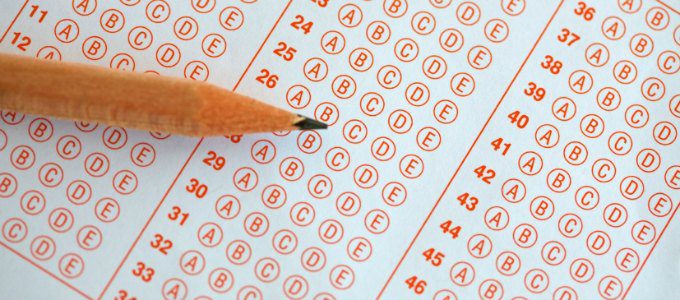If you’re waiting until the end of a learning program to test employees on what you’ve taught them, you’re doing it wrong.
Testing is essentially asking learners to retrieve the information they’ve learned, or encoded, in their heads and apply it — be it to a multiple-choice question, classroom conversation or real-life problem.
Unfortunately, the term “testing” evokes images of online quizzes, paper Scantrons and standardized exams like the ACT. That takes time and money, two things dear to any company.
Jeffrey Karpicke, associate professor of psychology at Purdue University, said it’s a better idea to think of testing as “retrieval-based learning,” which has learners apply their knowledge throughout a course or training session rather than hits them with a barrage of information capped off with a traditional evaluation.
Problem solving and being asked thought-provoking conversation starters are just two alternative methods that provide the right knowledge retrieval, but Karpicke said the cognitive psychology world is still figuring out on which ones work best — and there are a lot of strategies to study.
“When you’re successfully retrieving knowledge, just doing that is learning,” Karpicke said. “Even after you’ve successfully encoded something, ensure it’s long-term by making sure you can retrieve that knowledge over time.”
In my last post, I wrote about Sailor Gutzler, a 7-year-old who survived a plane crash in December and fought through unknown woods to find help thanks to the survival skills her father had taught her.
I promised there was something else learning leaders could glean from her example, and here it is: When it came down to it, none of her father’s lessons would have meant anything if she wasn’t able to remember them in the situation.
Did her dad make her do survival drills or simulations? Did he hand her a test at the end of each lesson? Whether he did, there had to be some form of retrieval going on, even if it was just a spirited conversation afterward.
When I was 16, my dad wanted to teach me safe driving skills in preparation of the upcoming Chicago winter. One of the things he had me do was drive at 40 miles an hour at an orange cone. He would yell “Brake!” about 10 feet out from the cone, and I would mash on the brakes so that I could stop before hitting it. We spent an hour in an empty parking lot doing this at different speeds and stopping distances until he was satisfied, and we both felt like our chests had permanent grooves from the seatbelt.
After a snowstorm early this month, I was driving on an unplowed road and had to stop for a red light. There weren’t any cars in front of me, but the intersection was only 20 feet away when I hit the brakes. All of a sudden, I was back in the parking lot, 10 feet away from an orange cone with my dad yelling, “Brake!” The power of retrieval kept me from sliding into the intersection.
It’s also what got a 7-year-old to safety in the middle-of-nowhere in Kentucky. I imagine Sailor could also hear her dad as she tried to light a makeshift torch using the plane’s burning remains, and later while she fought her way through unknown forest. It didn’t come down to a written test, but she did have to put what she learned into practice.
If it works for a second grader alone in the woods and a journalist in a 2003 Chevy Impala on an icy road, chances are retrieval-based learning will also help your employees.















